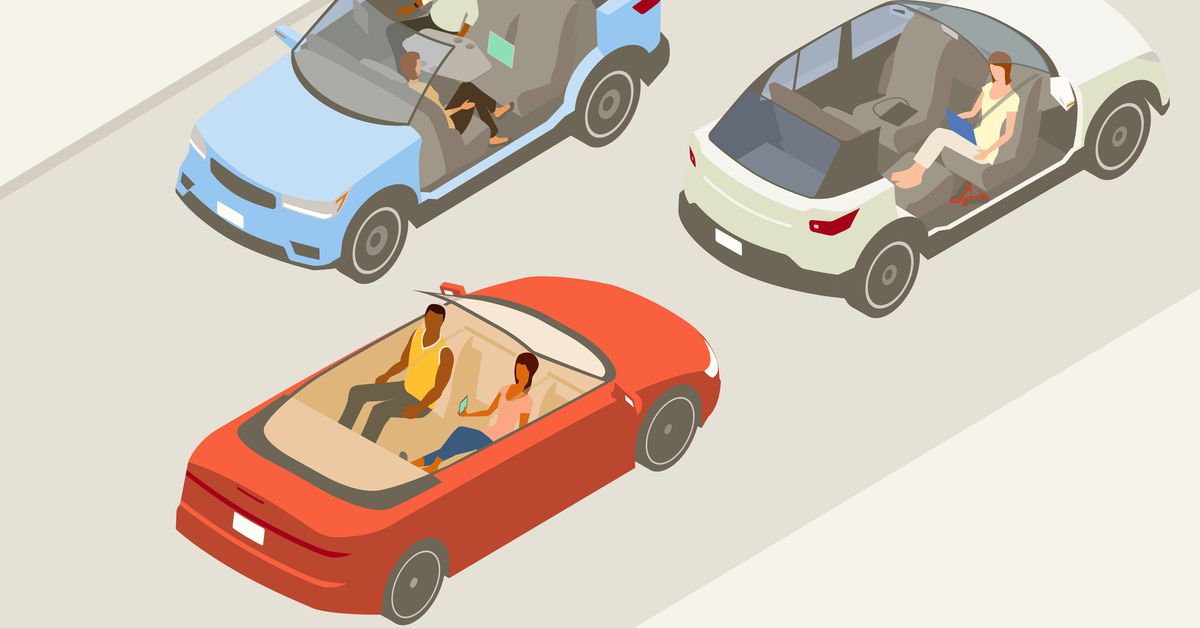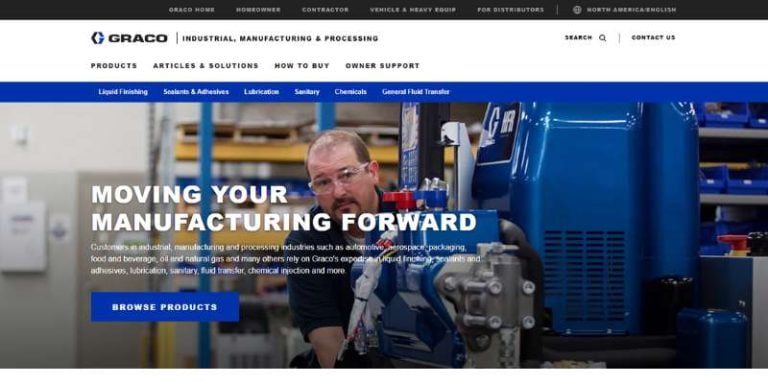
Last year saw a jump in the number of car fatalities, even as the pandemic kept many Americans off the roads. The number of deaths per 100 million miles driven grew 24 percent from a year earlier. It was the biggest single-year rise on record — and 2021 is on track to be just as bad. At the same time, the promise of autonomous cars has never been closer. Waymo and Tesla are continually improving their autonomous capabilities, drawing the tantalizing prospect of markedly less human suffering ever nearer. But getting to that future is complicated.
The decision to switch to autonomous vehicles presents a very modern take on an old ethical dilemma: the famed trolley problem.
This thought experiment involves a trolley car driver on a collision course with a group of pedestrians. The driver can do nothing and kill several people on the track ahead or take action, switching tracks so that just one person dies. These days, doing nothing means that about 1.3 million people will die each year globally in regular car accidents, the leading cause of death in people under 30. Switching tracks would involve more rapidly developing and adopting autonomous vehicles that could eventually prevent thousands of deaths per day. The problem is that the technology has a long way to go before it can drive people safely on its own in everyday conditions. In the meantime, it could lead to deaths at the hands of robots, if not humans.
Waymo and Tesla are at the forefront of the driverless car push and thus have a front seat to this dilemma. Both have similar goals — to safely transport people in autonomous vehicles — but they are operating with wildly different strategies.
Waymo, which shares a parent company with Google, is slowly and methodically rolling out its autonomous vehicles in the form of a robo-taxi service. The company boasts it has logged well over 20 million miles of autonomous driving without a single death. But currently, regular people can only ride in one of several hundred Waymo vehicles, in sunny Phoenix. Last week, the company got permission to launch its taxi service (with a human monitor behind the wheel) in a second city — San Francisco — where hills, weather, and traffic complicate the task. The company eventually plans to launch in other cities and license its automated driver technology to car manufacturers. But Waymo doesn’t know when that will happen because, as its co-CEO Tekedra Mawakana told Kara Swisher at the September 2021 Code Conference, the company is “in the process of learning.”
“It’s, I would say, the engineering challenge of our generation. That’s what’s taking it so long,” Mawakana said. “Safety takes time.”
In the meantime, people will continue to die in car accidents, with 94 percent of fatal car crashes caused by human error.
Tesla, on the other hand, has rolled out autonomous features much more quickly. In September, Tesla CEO Elon Musk announced that drivers with a record of safe driving and who paid for the feature could request permission to beta test its “Full Self-Driving” technology. It includes more advanced driver assistance features than Autopilot, Tesla’s existing semi-autonomous feature, which helps drivers steer, brake, and accelerate within a lane. The company claims that the hardware — but not the software, which is still being tested — in new Teslas is capable of “full self-driving in almost all circumstances” and is “designed to be able to conduct short and long distance trips with no action required by the person in the driver’s seat.” According to the National Highway Traffic Safety Administration (NHTSA), there are currently no fully automated or self-driving cars for sale, and such technology is years away.
The head of the National Transportation Safety Board has said that Tesla should fix existing safety deficiencies before rolling out the new tech. Meanwhile, other Tesla critics say that names like “Autopilot” and “Full Self-Driving” cause people to place more faith in the technology than they should, erroneously taking their hands off the wheel or not paying attention.
This dissonance has resulted in tragedy. In August, the NHTSA opened a formal investigation into Autopilot after crashes involving Teslas and emergency vehicles (12 so far). The agency has also opened special investigations into accidents suspected to have happened while advanced driver assistance systems were engaged and which have resulted in 12 deaths.
Musk maintains that, despite the deaths, these cars are 10 times safer than regular cars.
“Even if you, for argument’s sake, reduce fatalities by 90 percent with autonomy, the 10 percent that do die with autonomy are still gonna sue you,” Musk told Swisher at Code. “The 90 percent that are living don’t even know that that’s the reason they’re alive.”
There’s some truth to that. By taking humans out of the equation, autonomous cars have the potential to save lives and alleviate incalculable social and economic losses. As NHTSA put it, “Fully automated vehicles that can see more and act faster than human drivers could greatly reduce errors, the resulting crashes, and their toll.”
The key is getting to that future quickly without jeopardizing it by causing the very harm you’re attempting to stop.
Two roads traveled
If the goal is to get autonomous driving assistance to the masses, Tesla is closer. If the goal is to have cars that safely drive themselves, Waymo is winning.
“Tesla is doing high-altitude flights or near-space flights, and Waymo is landing on the moon,” Mike Ramsey, vice president at research firm Gartner, told Recode. “One is trying to achieve something that’s far harder to do than the other. But that’s not to say that the high-altitude flights can’t keep getting higher and higher.”
In other words, while Tesla probably won’t be delivering a fully autonomous vehicle anytime soon — despite its misleading naming — it could incrementally get better and better assistance features that would eventually lead to true self-driving capabilities.
Tesla vehicles are considered to be at level 2 on the engineering society SAE International’s automation scale. That means Tesla’s system requires constant driver supervision, even if the assistance features are handling some of the steering and braking. Waymo vehicles are level 4, meaning the car can drive itself under limited geographic conditions and doesn’t need driver supervision. However, the technology that powers them is not ready for mass-market use outside of its test areas.
Waymo’s hardware is much more robust than Tesla’s. It uses several redundant sensor systems, including lidar, radar, and cameras, to create a real-time picture of where it’s operating. The company also maps areas ahead of time by having human drivers manually drive the vehicles through them. Meanwhile, Tesla vehicles rely exclusively on cameras and ultrasonic sensors.
“The more sensors you have, it adds to the complexity of the system, but it also makes it way safer,” Ramsey said.
Cameras aren’t as accurate at gauging distance as lidar or radar, and their ability to map an area can be impaired by everyday hazards like snow, dust, or darkness. However, cameras are a lot cheaper, and that matters when it comes to getting this technology into consumers’ hands.
You can purchase a souped-up Model 3 Tesla for around $75,000. However, experts don’t think Tesla vehicles could be fully autonomous with their current hardware, and will likely need to incorporate other technology like lidar to get there. We don’t know the exact price of Waymo vehicles — which are Chrysler Pacificas and Jaguar I-Paces outfitted with Waymo’s sensors and autonomous driver tech — but the company’s former CEO previously said it “cost no more than a moderately equipped Mercedes S-Class,” which has a price tag of about $180,000. Waymo says its costs have come down significantly with the latest generation.
But by selling its vehicles to the general public, Tesla is able to collect lots of real-world driving data that will be useful in helping solve autonomous driving challenges. Raj Rajkumar, a professor of electrical and computer engineering at Carnegie Mellon University and an autonomous vehicle pioneer, calls Tesla’s data collection an “incredible advantage” but warns that data is “part of the answer, but it’s not the entire answer.” Still, he thinks Waymo ought to collect more of it from regular drivers in regular conditions.
“We should be driving them whenever they can drive themselves and, when they do not, humans drive themselves,” Rajkumar said. “And for a time we collect experience. We understand what works, what does not work, and we refine.”
Tesla’s relatively wide reach also means rolling out a truly autonomous vehicle, when they eventually make one, will be a lot easier.
“Tesla’s strategy is interesting because, if it works, it could be a lot more scalable. They could launch a lot faster in other cities than their competitors could,” Tasha Keeney, an analyst at Ark Invest, which has a large stake in Tesla, said. Keeney said a faster rollout of autonomous vehicles will hasten a safer driving future, but it won’t be without cost.
“Are computers better than humans at driving? I think yes,” she said. “Will there be mistakes along the way? Yes.”
What’s next for autonomous vehicles?
Experts estimate that we could have level 3 or 4 cars for sale within the next 10 years. But in the meantime, it’s important not to overlook the benefits that the pursuit of autonomous cars has already wrought. Cars will soon be able to reliably take over in some instances, say, on the highway — where the lanes are clearly marked and the rules are pretty clear — but humans might take over on city streets.
Already a number of advanced driver assistance features are showing up on regular vehicles. Automatic emergency braking, technology that automatically slows or stops the car before it hits an object, has been shown to reduce injuries and fatalities and will be standard on most vehicles sold in the US next year. Consumers can expect more of these features to spill over from the quest for autonomous vehicles in the next few years.
“We should all stop thinking in terms of something magical will happen and all of a sudden cars will become self-driving,” Rajkumar said. Rather, the shift will happen feature by feature, after many tests and improvements. “That last change will be so incremental you won’t be able to realize it happened over the last five to 10 years.”
When cars do become fully autonomous, there are also benefits beyond safe driving. Keeney said autonomous technology would also greatly reduce the cost of travel because of cars’ increased utilization as taxis, without the expense of a driver. “It’ll give a lot of people access to very inexpensive point-to-point travel, which could totally change our lives and how we get around.”
In the meantime, perhaps the path forward for self-driving cars isn’t a binary choice at all. We’ll likely see a spectrum of improvements from many car companies as they incorporate more and more driver assistance features. And although in the near term the tech might not be the self-driving future we were promised, it will be better than nothing.
“We should not lose sight of the benefits the technology can bring,” Rajkumar said. “It takes time, but we’ll eventually get there.”






